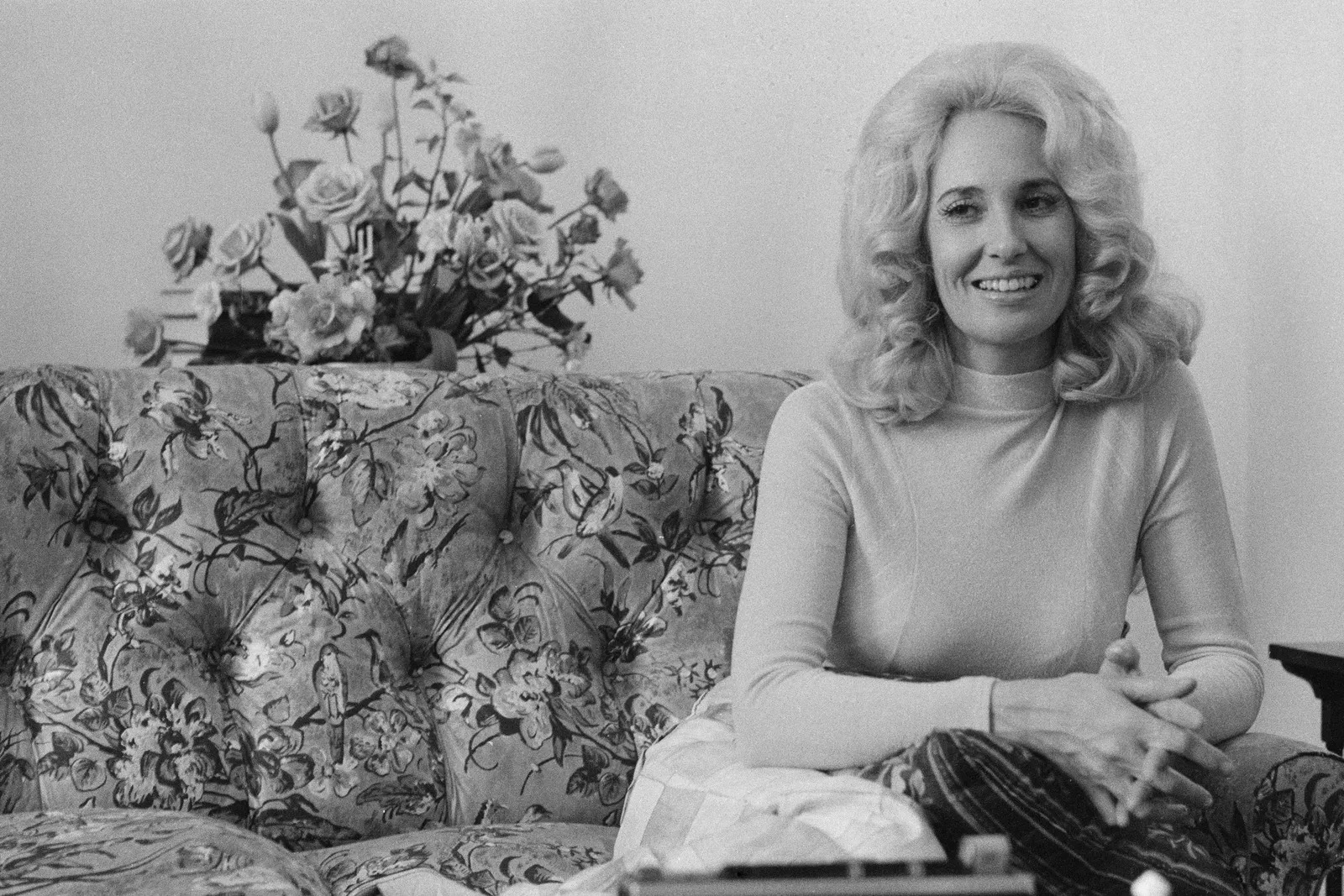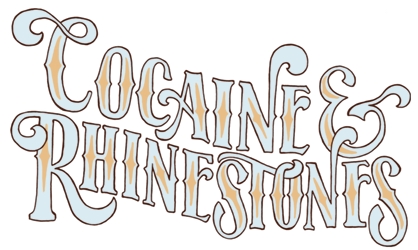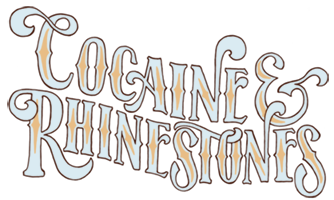
Oh, you thought Jones had a hard time dealing with George Richey? Imagine being married to the guy. Today we say one of the saddest and most infuriating goodbyes we’ll ever have to say, the one we say to Tammy Wynette.
Contents (Click/Tap to Scroll)
- Primary Sources – books, documentaries, etc.
- Transcript of Episode – for the readers
- Liner Notes – list of featured music, online sources, further commentary
Primary Sources
The Main Library and the Season 2 Library contain the books used for this episode.
Transcript of Episode
As part of my agreement with Simon & Schuster to publish a book adaptation of Season 2, the transcripts that have been freely available for over a year will be temporarily removed from this website. Please consider ordering a copy of Cocaine & Rhinestones: A History of George Jones and Tammy Wynette through your favorite local bookstore or requesting that your local library order a copy you can check out.
Liner Notes
Excerpted Music
This episode featured excerpts from the following songs, in this order [with links to purchase or stream where available]:
- Tammy Wynette & Charlie Louvin – “If I Could Hear My Mother Pray Again” [Amazon / Apple Music]
- The Kendalls – “Heaven’s Just a Sin Away” [Amazon / Apple Music]
- Tammy Wynette – “Womanhood” [Amazon / Apple Music]
- Tammy Wynette – “They Call It Makin’ Love” [Amazon / Apple Music]
- The Maggots – “(Let’s Get, Let’s Get) Tammy Wynette” [Amazon / Apple Music]
- Tammy Wynette – “No One Else in the World” [Amazon / Apple Music]
- Tammy Wynette – “Starting Over” [Amazon / Apple Music]
- Tammy Wynette – “Still Around” [Amazon / Apple Music]
- Emmylou Harris – “If I Could Only Win Your Love” [Amazon / Apple Music]
- Tammy Wynette – “If I Could Only Win Your Love” [Amazon / Apple Music]
- George Jones & Tammy Wynette – “A Pair of Old Sneakers” [Amazon / Apple Music]
- Tammy Wynette – “Cowboys Don’t Shoot Straight (Like They Used To)” [Amazon / Apple Music]
- Tammy Wynette – “Crying in the Rain” [Amazon / Apple Music]
- Tammy Wynette – “Another Chance” [Amazon / Apple Music]
- Tammy Wynette – “I Just Heard a Heart Break (And I’m So Afraid It’s Mine)” [Amazon / Apple Music]
- Tammy Wynette – “Unwed Fathers” [Amazon / Apple Music]
- Tammy Wynette – “Lonely Heart” [Amazon / Apple Music]
- Mark Gray & Tammy Wynette – “Sometimes When We Touch” [Amazon / Apple Music]
- Tammy Wynette – “You Can Lead a Heart to Love (But You Can’t Make It Fall)” [Amazon / Apple Music]
- Tammy Wynette – “Alive and Well” [Amazon / Apple Music]
- Tammy Wynette & Vern Gosdin – “Some Things Will Never Change” [Amazon / Apple Music]
- Tammy Wynette – “Your Love” [Amazon / Apple Music]
- Tammy Wynette – “Talkin’ to Myself Again” [Amazon / Apple Music]
- Tammy Wynette – “Beneath a Painted Sky” [Amazon / Apple Music]
- Tammy Wynette – “If You Let Him Drive You Crazy (He Will)” [Amazon / Apple Music]
- Tammy Wynette – “What Goes with Blue” [Amazon / Apple Music]
- Randy Travis & Tammy Wynette – “We’re Strangers Again” [Amazon / Apple Music]
- The KLF ft. Tammy Wynette – “Justified & Ancient (Stand by the JAMs mix)” [Amazon / Apple Music]
- Loretta Lynn, Dolly Parton & Tammy Wynette ft. Kitty Wells – “It Wasn’t God Who Made Honky Tonk Angels” [Amazon / Apple Music]
- Patsy Cline ft. Loretta Lynn, Dolly Parton & Tammy Wynette – “Lovesick Blues” [Amazon / Apple Music]
- Loretta Lynn, Dolly Parton & Tammy Wynette – “Silver Threads and Golden Needles” [Amazon / Apple Music]
- Tammy Wynette & Elton John – “A Woman’s Needs” [Amazon / Apple Music]
- Tammy Wynette & Joe Diffie – “Glass Houses” [Amazon / Apple Music]
- Tammy Wynette & Wynonna Judd – “Girl Thang” [Amazon / Apple Music]
- George Jones & Tammy Wynette – “One” [Amazon / Apple Music]
- Tammy Wynette – “Out of the Spotlight” [Amazon / Apple Music]
- Melissa Etheridge – “Apartment #9” [Amazon / Apple Music]
Excerpted Video
These videos were excerpted in the episode. For any number of reasons, YouTube (or DailyMotion) may remove them in the future but here they are for now:
Commentary and Remaining Sources
This was the final Tammy Wynette episode in the season, so I do hope that I’ve proven what I said in the earlier episodes’ Liner Notes: I may not respect everything she did but I do respect and feel for her. I can see how a lot of people would see me telling a story about millions of fans getting sick of Tammy Wynette and believe I’m just talking about how sick of Tammy Wynette I am but those people are mistaken. Before the first Tammy episode came out, I posted on social media that I find her saddest recordings to be much sadder than the saddest of George Jones. I meant that and I imagine many more people now feel the same way than before Season 2. There was never anything I was gonna be able to do about the fans who can’t handle the truth but, in my opinion, it’s far more disrespectful to Tammy Wynette’s legacy to repeat lies than it is to try and discover the truth. My job here was to explain how and why her career played out the way it did. I believe that’s what I’ve done.
All of my main sources for this intro were mentioned in the intro itself and I used too many various sources to mention to fact check and correct those main sources. As with the rest of the intros in the season, you’re getting what seems to me to be the general consensus from everyone who’s been paying attention and using the latest credible sources to update their opinions of history.
One connection to something from earlier in the season that’s worth noting: prior to Lewis & Clark heading west on the Missouri River, President Jefferson sent Meriweather Lewis to Philadelphia in order to learn some basics of curative medicine from a doctor, named Benjamin Rush.
While we’re on presidents…
In the previous episode, when Epic’s new Nashville marketing department arranged for Tammy Wynette to perform at The White House, the First Lady of the country who The First Lady of Country sang for was, of course, Betty Ford, because Gerald Ford was president at the time.
One last thing on this specific episode, there’s really no reason to expect The Maggots or anyone else suspected there was a small, real bruise hiding beneath the huge, fake bruises they could see on Tammy Wynette’s face or that her story of a violent abduction was intended to cover up an instance of domestic violence. A lot of the reactions you’ll see from people making comments at the time (and there are much worse ones than that Maggots song floating around out there) were from people who had every reason to think Tammy was making up the whole thing out of thin air. So, while certainly insensitive, perhaps not as insensitive as it may seem.
As with the rest of my sources for Season 2, they can be found on the Season 2 Library and Main Library pages.
Today, I should give some commentary on the books from Tammy’s daughters.
There are two unfortunate trends when it comes to using children of famous artists as sources on those artists. One is how rarely the kids have much of a relationship with the artist, unless they choose to work as part of their organization, because – as you heard Tammy herself say in this episode – the artist was never home. The second unfortunate trend is that fans tend to regard artists’ children as the most reliable sources when they are, in fact, usually the people with the most to gain from reinforcing whatever version of the official story has been sold to fans. (Because of the first trend or because the child may not have even been born during the events they’re discussing, the official story sold to fans may even be the only version they know.)
Because of what Georgette calls “The Great Divide,” these books from Tammy’s daughters are (unfortunately) examples of the first trend. However, Tammy was around enough for both daughters to get a sense of how much was wrong behind-the-scenes and, because they did not inherit a meaningful portion of the estate, they stood to gain nothing from reinforcing the official version of events and the purpose of these books was, therefore, to debunk it. Both daughters told the world about the abuse Tammy secretly suffered for years and drew attention to the infuriating circumstances of her death. Jackie is older than Georgette, so she has more first-hand details of the earlier years and her co-author is who worked with George Jones on his official autobiography, which lends a greater awareness of the Jones side of the story. Georgette being Tammy’s youngest means she lived at home later into the story than the other children, so she has more first-hand memory of what Tammy’s home life was like in the late 1970s and 1980s. Because she’s the only child of Tammy and George, I referred to Georgette more times throughout this season but both books were equally valuable.
Alright, come back in a couple weeks because we’ve still got to get to the end of George Jones’ career and life.

